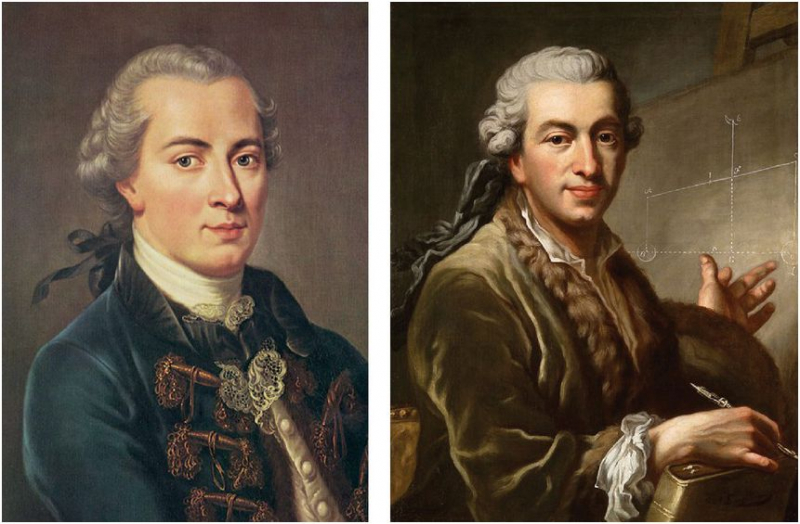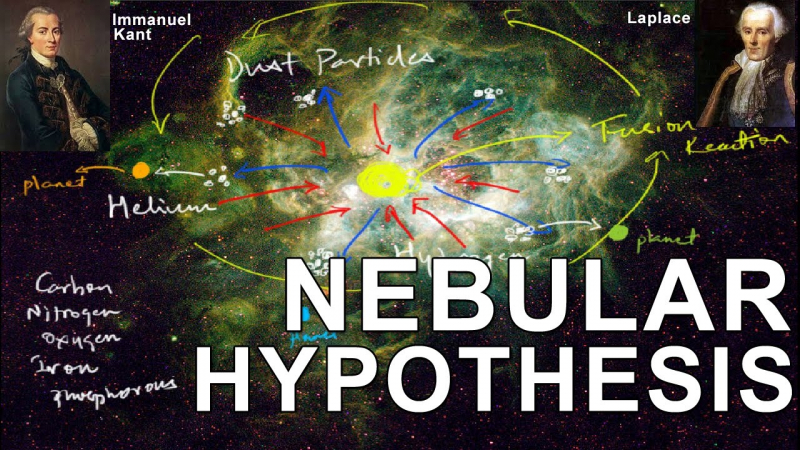Immanuel Kant contributed to the development of astronomy and other disciplines
Kant provided an explanation of the development of the Solar System in one of his first publications. Kant postulated a nebular hypothesis of the creation of the solar system in the Allgemeine Naturgeschichte und Theorie des Himmels (1755; Universal Natural History and Theory of the Heavens), in which the Sun and the planets condensed from a single gaseous cloud. It was then referred to as the Kant-Laplace hypothesis after being independently advanced by Laplace in 1796. At this time, Kant valued the philosophical implications of Newtonian physics just as highly as its scientific merits.
His earliest lessons were in arithmetic and physics, and he never lost interest in advances in science. His publication of multiple scientific books discussing the various human races, the nature of winds, the causes of earthquakes, and the general theory of the skies demonstrates that it was more than just casual curiosity. Immanuel Kant's interest in studying gravity and formulating a solution to the issue of Earth rotation is one of the most interesting facts about Immanuel Kant.










